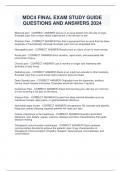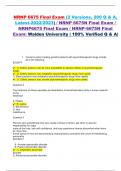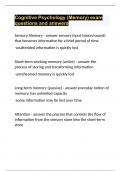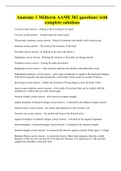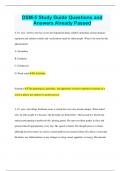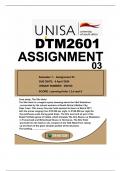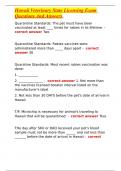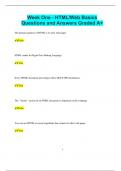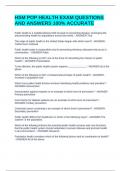Tentamen (uitwerkingen)
MDC4 FINAL EXAM STUDY GUIDE QUESTIONS AND ANSWERS 2024
- Vak
- MDC4
- Instelling
- Amsterdam University College (AUC)
MDC4 FINAL EXAM STUDY GUIDE QUESTIONS AND ANSWERS 2024 Referred pain - CORRECT ANSWER-Occurs in an area distant from the site of origin. Example: pain from a heart attack might be felt in the left arm or jaw Phantom Pain - CORRECT ANSWER-Pain that is perceived from an area that has been s...
[Meer zien]
